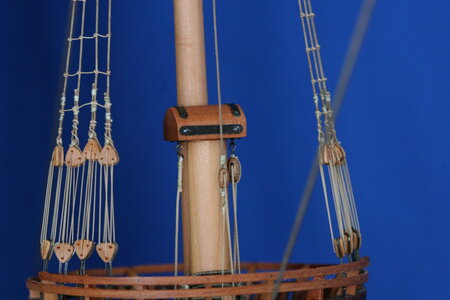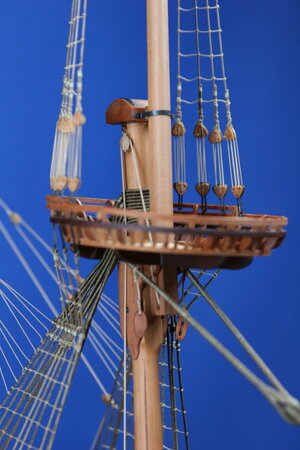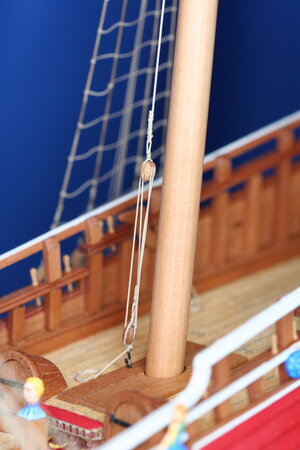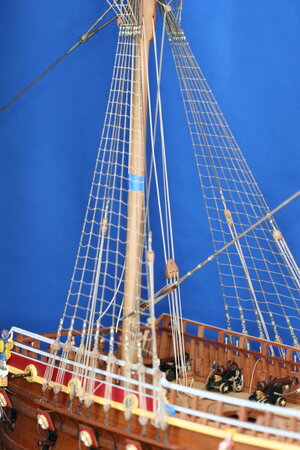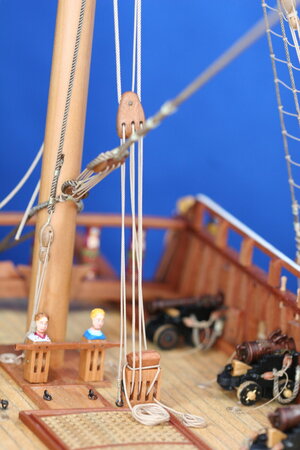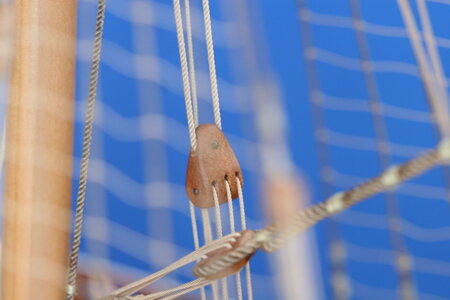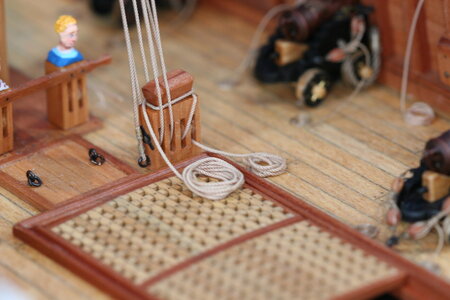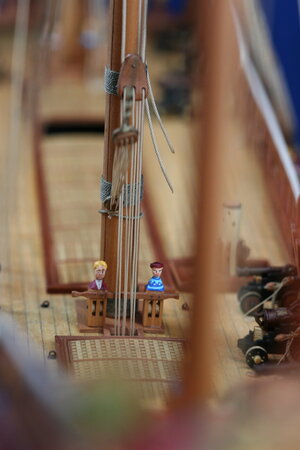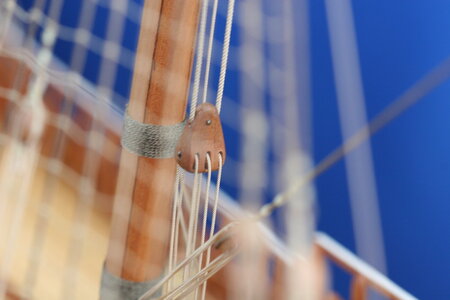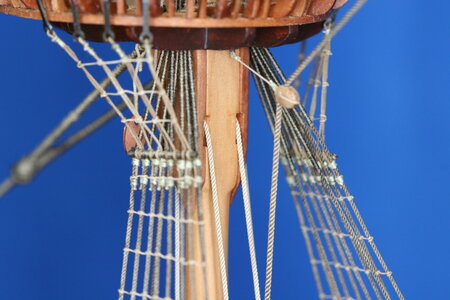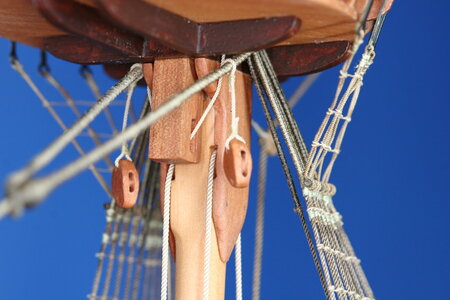This is supremely excellent work, Paul. So CLEAN and tidy, with detail that can capture you for hours, looking at all the parts.I want to begin by thanking all of you for your continued interest in my build and for the active participation of many as I struggle to work out the details. While I have to accept that every question I would like answered can't be answered - and that I will make errors in judgement and execution along the way - neither do I want to be dismissive of the simple fact that I am building a model of a real ship with real history.
Over the past several weeks I have come near to completing the standing rigging. I have made some decisions along the way that not everyone will support but that's OK - it wasn't for lack of time spent trying to figure things out.
My customary blue background didn't cut it for pictures of rigging, so I cobbled together a few pieces art board that my kids had lying around... and now that I see the photos I regret not taking the time to set up proper lighting...
The overall view:
View attachment 308543
Mizzen:
View attachment 308544
Main:
View attachment 308545
Fore:
View attachment 308546
Sprit:
View attachment 308547
And I chose to rig the top ropes just for fun. Obviously these lines would have been taken down once the masts were raised but I think they make a nice addition to a model and could create a worthwhile talking point. I only did these for the top masts not the topgallants...
View attachment 308549
I'm confident, given the attention they have received on this log, that you didn't miss the fact that backstays are not rigged. Research continues with the hope that more can be learned.
Fun fact: I have now used nearly 60 meters of the smallest rope (roughly 0.24 mm) I can make from my chosen source threads. Most of this went to ratlines but also lanyards in a few spots. While there is great satisfaction in rope fabrication - I'm no longer sold on the (time) cost to value ratio.
Thanks for stopping by! It's a joy to share this journey with you!
Don't let it fall off the table.



 . Too freaking good my friend.
. Too freaking good my friend.


